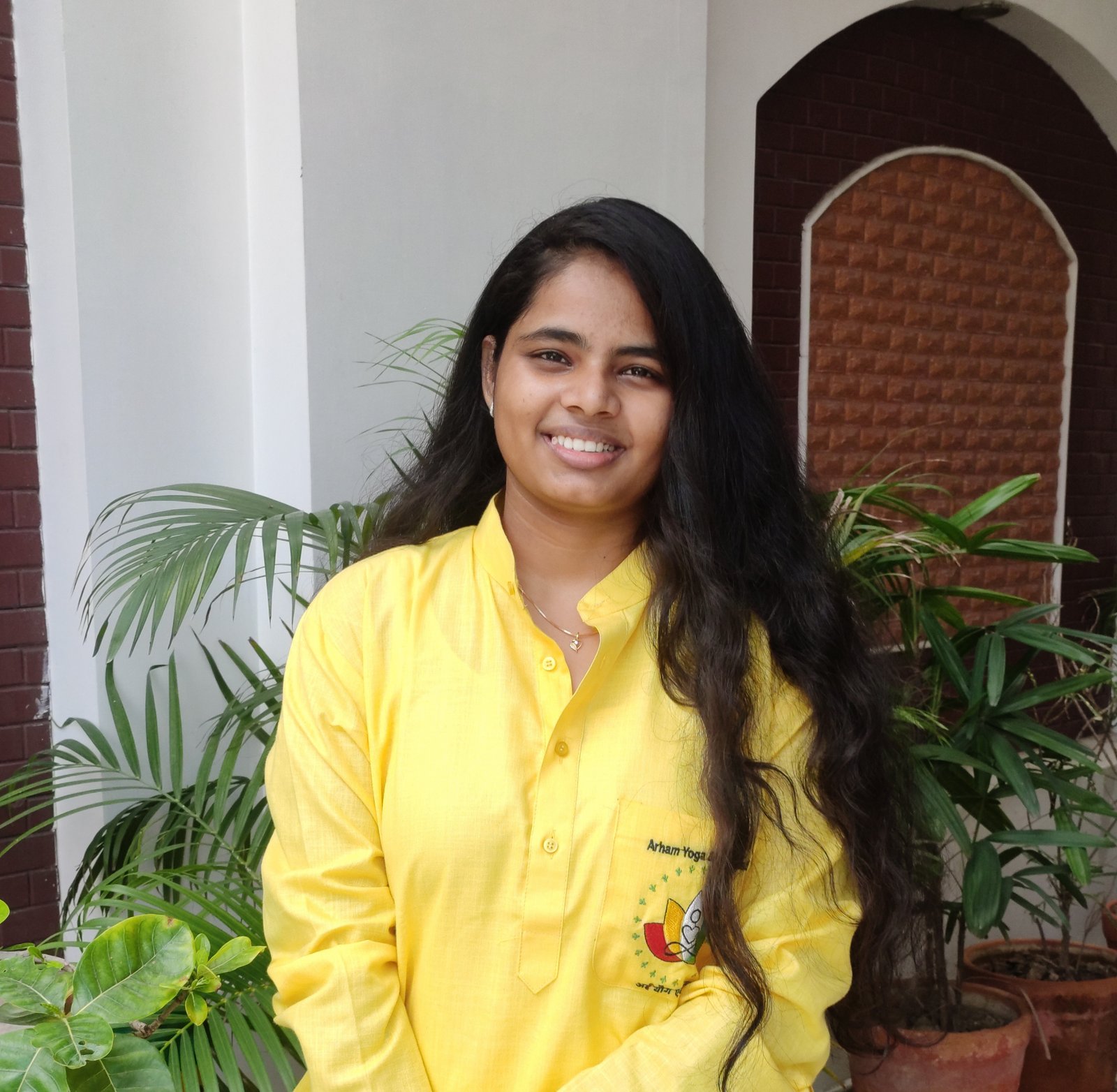

Academic Classes / Class 11 Tuition / CBSE / BIOLOGY-11 / BIOLOGY-GRADE-11-CBSE
Ankita Jain
Masters of Science from Teerthanker mahaveer university
Student's Reviews
By Several Parameters
This is the course of CBSE Class 11 Biology provides an in-depth, scientific understanding of how all living and non-living organisms interact and the relationship of biology with other areas of knowledge. It covers topics such as the living world, biological classification, structural organization in plants and animals, cell structure and function, plant physiology, human physiology and more.
Students must have the knowledge of Class 10 Biology concepts for this course.
| Course | Fee per Class (In KlassCoins) | Duration | Type |
|---|---|---|---|
| BIOLOGY-GRADE-11-CBSE | 270 | 11 Months | Indiviual Classes |
Hello, I'm Ankita Jain, a biology educator based in Muzaffarnagar, Uttar pradesh. I hold a B.Sc. degree in Medical lab technology from Hemwati nandan bahuguna university, garhwal and pursuing M.Sc. Medical Biochemistry from Teerthanker mahaveer university, moradabad, with 02 years of teaching experience. My commitment to fostering a dynamic learning environment has consistently contributed to student's success. I am excited to bring my passion for education and to continue with a positive impact in the lives of my students.
Area of Expertise: Expert in medical studies and clinical cases, with a focus on fostering critical thinking and communication skills in students.
Achievements: Published educational article, a silver medalist in my undergraduate studies alongwith a first division holder in first and second year of my post graduate studies and received a recognition for outstanding student engagement.
Professional Career Goals: To inspire a love for learning, cultivate a supportive classroom environment, and contribute to the educational advancement of students.
Hobbies and Interests: Enthusiastic reader, dedicated to continuous professional development, a dancer, social worker and music listener.
-
Subject Details:
I specialize in tutoring biology to the students of grade 8-12 from CBSE & ICSE curriculum and can take both 1-1 private class or a group class depending on your comfort. I had a experience of tutoring to the students of physiotherapy, nursing and medical college. I believe in the power of education to inspire and empower students. My mission is to cultivate a love for learning by creating a engaging classroom environment. Let's embark on a journey of knowledge together!
Soft Skills: Effective Communication, adaptability, creativity, team collabration, problem solving and empathy.
Worksheets/Assignments Creation:
- Extensive experience in developing comprehensive worksheets and assignments tailored to curriculum objectives.
- Proficient in integrating technology for interactive and engaging online assignments.
- Received positive feedback on the effectiveness of designed materials in promoting student understanding and participation.
-
Book Published Details:
Not yet.
-
Language Known:English, Hindi
-
Total Experiance:2 Years
-
Listening & Questioning Skill:Excellent
-
Reading Skill:Excellent
-
Writing Skill:Excellent
-
Presentation Skill:Excellent
-
Online classes Experiance:60 hours
-
Award Recg:
A topper of biology and physical education in 12th standard as well as a silver medalist in my undergraduate studies continuing with a first division holder in first and second year of my post graduate studies.
-
Research Work:
Published an article on a medical related topic " Study of renal profile parameters in hypothyroidism" in a pubmed indexed journal named International Journal of Scientific Research.
Degree: Bachelors of Science - University: Hemwati Nandan Bahuguna University
Degree: Masters of Science - University: Teerthanker mahaveer university
Degree:
This is the course of CBSE Class 11 Biology provides an in-depth, scientific understanding of how all living and non-living organisms interact and the relationship of biology with other areas of knowledge. It covers topics such as the living world, biological classification, structural organization in plants and animals, cell structure and function, plant physiology, human physiology and more.
-
Learning Objectives:
Unit I- Diversity in The Living World
Chapter 1: The Living World.
Chapter 2: Biological Classification
Chapter 3: Plant Kingdom
Chapter 4: Animal Kingdom
Unit II – Structural Organisation in Plants and Animals
Chapter 5- Morphology of Flowering Plants
Chapter 6- Anatomy of Flowering Plants
Chapter 7- Structural Organisation in Animals
Unit III – Cell: Structure and Function
Chapter 8- Cell: The Unit of Life
Chapter 9- Biomolecules
Chapter 10: Cell Cycle and The Cell Division
Unit IV – Plant Physiology
Chapter 11: Photosynthesis in Higher Plants
Chapter 12: Respiration in Plants
Chapter 13: Plant Growth and Development
Unit V: Human Physiology
Chapter 14: Breathing and Exchange of Gases
Chapter 15: Body Fluids and Circulation
Chapter 16: Excretory Products and their Elimination
Chapter 17: Locomotion and Movement
Chapter 18: Neural Control and Coordination
Chapter 19: Chemical Coordination and Integration
-
Course Outline:
Unit-I Diversity of Living Organisms
Chapter-1: The Living World Biodiversity; Need for classification; three domains of life; taxonomy and systematics; concept of species and taxonomical hierarchy; binomial nomenclature
Chapter-2: Biological Classification Five kingdom classification; Salient features and classification of Monera, Protista and Fungi into major groups; Lichens, Viruses and Viroid’s.
Chapter-3: Plant Kingdom Classification of plants into major groups; Salient and distinguishing features and a few examples of Algae, Bryophyta, Pteridophyte, Gymnospermae (Topics excluded – Angiosperms, Plant Life Cycle and Alternation of Generations)
Chapter-4: Animal Kingdom Salient features and classification of animals, non-chordates up to phyla level and chordates up to class level (salient features and at a few examples of each category).
Unit-II Structural Organization in Plants and Animals
Chapter-5: Morphology of Flowering Plants Morphology of different parts of flowering plants: root, stem, leaf, inflorescence, flower, fruit and seed. Description of family Solanaceae
Chapter-6: Anatomy of Flowering Plants Anatomy and functions of tissue systems in dicots and monocots.
Chapter-7: Structural Organisation in Animals Morphology, Anatomy and functions of different systems (digestive, circulatory, respiratory, nervous and reproductive) of frog.
Unit-III Cell: Structure and Function
Chapter-8: Cell-The Unit of Life Cell theory and cell as the basic unit of life, structure of prokaryotic and eukaryotic cells; Plant cell and animal cell; cell envelope; cell membrane, cell wall; cell organelles - structure and function; endomembrane system, endoplasmic reticulum, Golgi bodies, lysosomes, vacuoles, mitochondria, ribosomes, plastids, microbodies; cytoskeleton, cilia, flagella, centrioles (ultrastructure and function); nucleus.
Chapter-9: Biomolecules Chemical constituents of living cells: biomolecules, structure and function of proteins, carbohydrates, lipids, and nucleic acids; Enzyme - types, properties, enzyme action. (Topics excluded: Nature of Bond Linking Monomers in a Polymer, Dynamic State of Body Constituents – Concept of Metabolism, Metabolic Basis of Living, The Living State)
Chapter-10: Cell Cycle and Cell Division Cell cycle, mitosis, meiosis and their significance.
Unit-IV Plant Physiology
Chapter-13: Photosynthesis in Higher Plants Photosynthesis as a means of autotrophic nutrition; site of photosynthesis, pigments involved in photosynthesis (elementary idea); photochemical and biosynthetic phases of photosynthesis; cyclic and non-cyclic photophosphorylation; chemiosmotic hypothesis; photorespiration; C3 and C4 pathways; factors affecting photosynthesis.
Chapter-14: Respiration in Plants Exchange of gases; cellular respiration - glycolysis, fermentation (anaerobic), TCA cycle and electron transport system (aerobic); energy relations - number of ATP molecules generated; amphibolic pathways; respiratory quotient.
Chapter-15: Plant - Growth and Development Seed germination; phases of plant growth and plant growth rate; conditions of growth; differentiation, dedifferentiation and redifferentiation; sequence of developmental processes in a plant cell; plant growth regulators - auxin, gibberellin, cytokinin, ethylene, ABA.
Unit-V Human Physiology
Chapter-17: Breathing and Exchange of Gases Respiratory organs in animals (recall only); Respiratory system in humans; mechanism of breathing and its regulation in humans - exchange of gases, transport of gases and regulation of respiration, respiratory volume; disorders related to respiration - asthma, emphysema, occupational respiratory disorders.
Chapter-18: Body Fluids and Circulation Composition of blood, blood groups, coagulation of blood; composition of lymph and its function; human circulatory system - Structure of human heart and blood vessels; cardiac cycle, cardiac output, ECG; double circulation; regulation of cardiac activity; disorders of circulatory system - hypertension, coronary artery disease, angina pectoris, heart failure.
Chapter-19: Excretory Products and their Elimination Modes of excretion - ammonotelism, ureotelism, uricotelism; human excretory system – structure and function; urine formation, osmoregulation; regulation of kidney function - renin - angiotensin, atrial natriuretic factor, ADH and diabetes insipidus; role of other organs in excretion; disorders - uraemia, renal failure, renal calculi, nephritis; dialysis and artificial kidney, kidney transplant.
Chapter-20: Locomotion and Movement Types of movement - ciliary, flagellar, muscular; skeletal muscle, contractile proteins and muscle contraction; skeletal system and its functions; joints; disorders of muscular and skeletal systems - myasthenia gravis, tetany, muscular dystrophy, arthritis, osteoporosis, gout.
Chapter-21: Neural Control and Coordination Neuron and nerves; Nervous system in humans - central nervous system; peripheral nervous system and visceral nervous system; generation and conduction of nerve impulse
Chapter-22: Chemical Coordination and Integration Endocrine glands and hormones; human endocrine system - hypothalamus, pituitary, pineal, thyroid, parathyroid, adrenal, pancreas, gonads; mechanism of hormone action (elementary idea); role of hormones as messengers and regulators, hypo - and hyperactivity and related disorders; dwarfism, acromegaly, cretinism, goitre, exophthalmic goitre, diabetes, Addison's disease. Note: Diseases related to all the human physiological systems to be taught in brief.
-
Recomended Audience:
Students who are currently in Class 11 in CBSE Board.
-
Pre-Requisite Requirement:
Students must have the knowledge of Class 10 Biology concepts for this course.
-
Course Level:Intermediate
-
Language of Teaching:English, Hindi
-
Class Schedule Availiability:Evening


